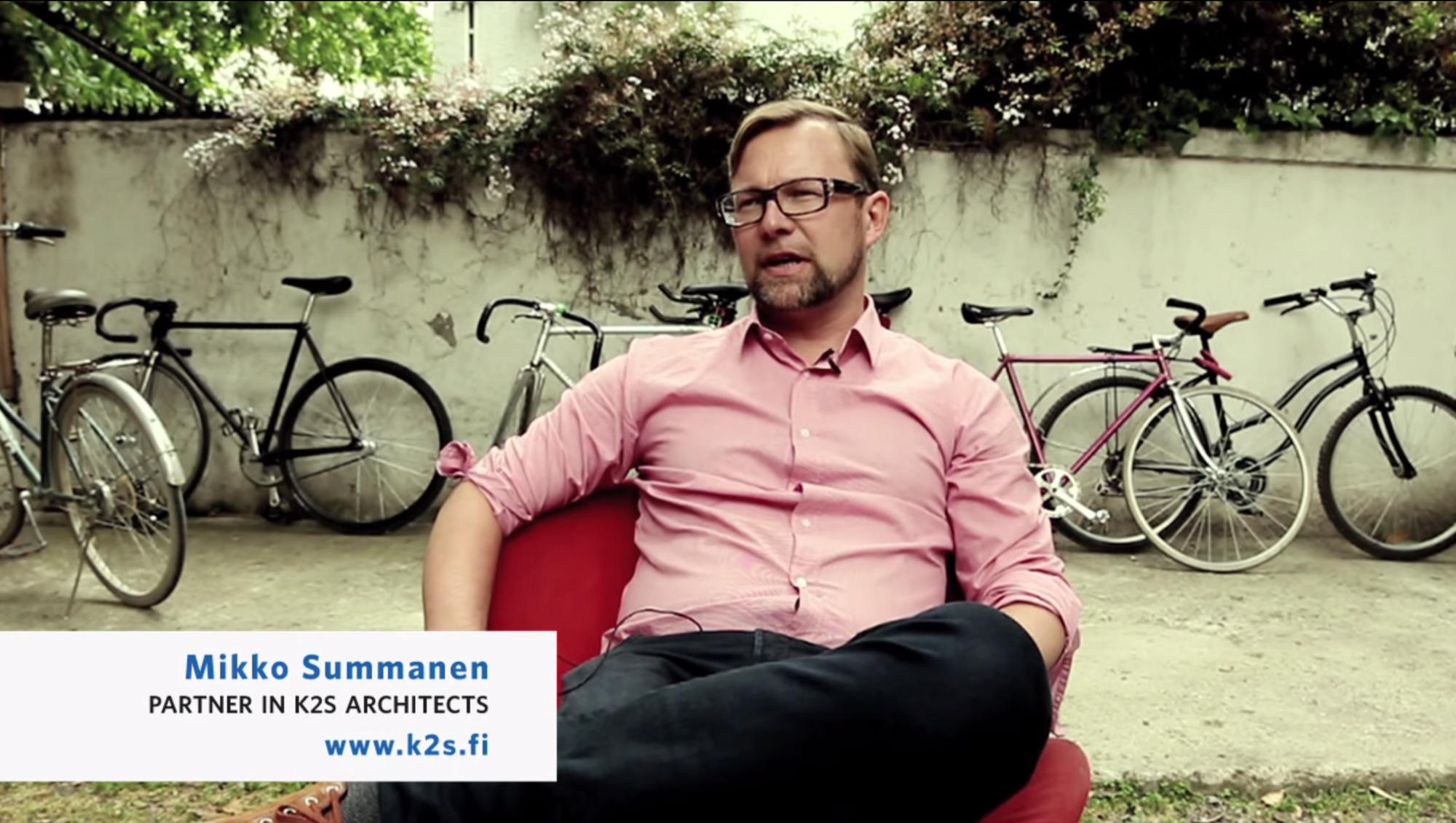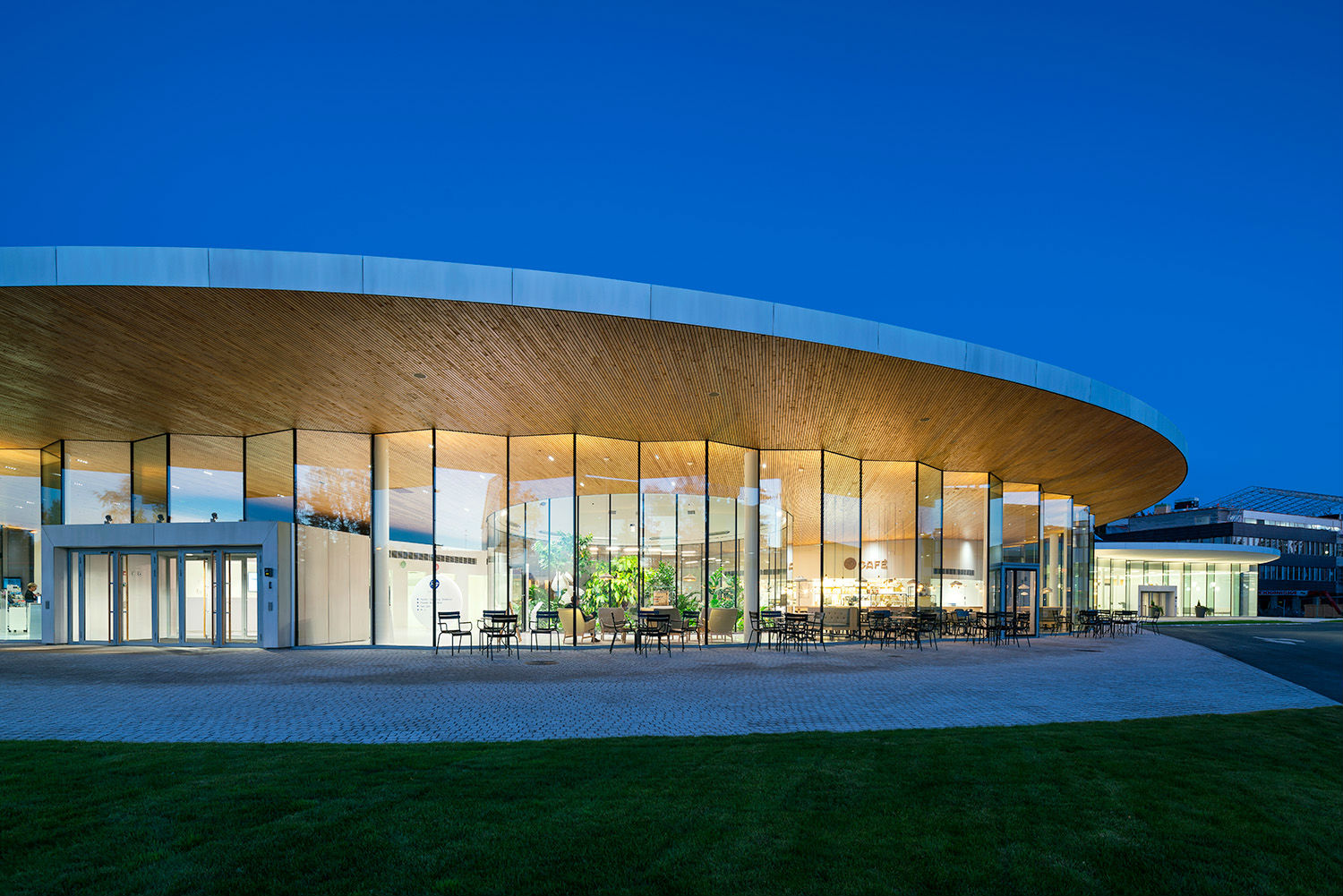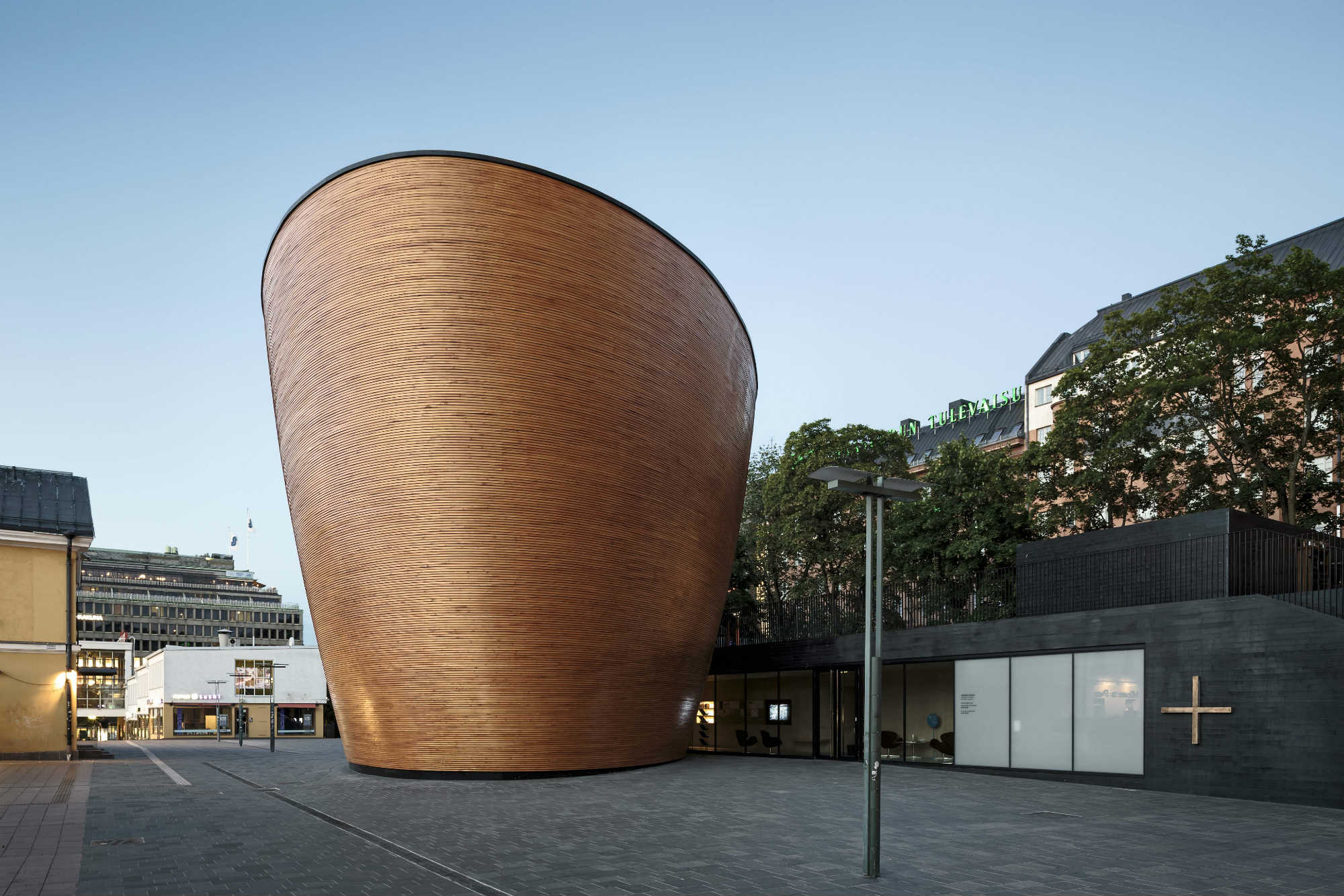
Known for designing the Kamppi Chapel in Helsinki and an expert in wood construction, architect Mikko Summanen sat down with us to discuss the possibilities, challenges, and future outlook of building with wood in Finland.
Facts:
Mikko Summanen
- Architect SAFA
- Partner at the K2S architecture firm
- Adjunct Professor of Architecture and Building Technology at the Department of Architecture, Aalto University, Helsinki
- Has studied, worked, and held teaching posts in Helsinki and Tokyo, among other cities.
What do you consider the high points of your career?
“I’d like to think that my ultimate achievement as an architect is yet to come, but the Helsinki Olympic Stadium canopy architecture competition in 2003 is definitely a career high, with wood playing a major role in our winning design. Currently I’m hard at work with my firm with the full renovation of the Olympic Stadium, and I believe it’s going to stand out as another career highlight when completed next year.
The Kamppi Chapel, built in 2012, is probably our best-known building, and I’m delighted to see how actively it’s used whenever I visit – it’s been tremendously popular. It’s also a place where people get help every day, with the city of Helsinki social services making use of the space. It’s a small building with a big impact. Architecture only comes to life through people – when you get to see people living in the buildings you’ve designed, or using the spaces.
The Fazer Visitor Centre in Vantaa, completed in 2016, is also one of our better-known buildings, and another success. It’s broken all kinds of visitor records since opening to the public, and that’s been great to see.”

Wood construction is trending at the moment – why do you think that is?
“It’s all about sustainability: for sustainable development, wood is by far the best material available. Finland and the Nordic countries have a strong tradition in wood construction along with a culture of innovation building on this tradition. This is a healthy foundation for continuous development and the increasingly high profile of wood construction. The aesthetic and emotional characteristics add to its popularity, and wood is often considered warm and approachable.”
What are the top benefits of using wood in construction?
“The fact that it’s a renewable resource. And when you build with wood, the building acts as a carbon sink, helping to mitigate climate change. The choice of materials matters. At its best, a well-designed, well-built wooden building can last hundreds of years.
And wood is a truly versatile material: you can use it to make the frame, the main walls, exterior and interior surfaces, furnishings, and other elements. As a material, you can’t beat the versatility of wood.”
What are the challenges when building with wood?
“For designers, fire safety is the number one challenge: how to make sure that a wooden building meets all fire safety requirements, which are often quite strict. In the new government program discussions have been held as to whether these requirements could perhaps be eased a bit. There will surely be increasing demand for fire-retardant treatment and related innovations in future.
The cost associated with wood construction is another challenge, as it currently requires a larger average investment than building with concrete. But it’s also about the client’s willingness to go the extra mile: if the goal is sustainable construction, certain investments are necessary.
Moisture management remains a challenge, as it does in all construction work, both during and after construction. You really have to know what you’re doing, especially with joints and detailing. But whatever you choose, there is no such thing as a maintenance-free material.”
Why was wood selected for Kamppi Chapel, and what was particularly interesting in the design work?
“The assignment was given by the Helsinki Parish Union and the City of Helsinki, and wood was their material of choice. They wanted the Chapel at the corner of Narinkkatori in Kamppi, Helsinki – a choice we were very happy with.
Only the sacred space is wooden, while the secondary areas are constructed with other materials – steel, concrete, and stone. However, all visible surfaces are wooden, with the remaining space blending into a base with surrounding materials.
The other materials were more or less practical choices, but the sacred space needed to be expressive and emotive, which is why we went with wood there.
Various types of wood were used – spruce on the exterior, alder on the interior, and ash for the furnishings. And in terms of building engineering physics, different types of wood have different properties, which was also a factor.
Another noteworthy thing is that the chapel space is made from Finnish wood, with all lumber transported from within 200 km of the construction site – from the forests of Fiskars, among other places. For sustainable construction, it’s important to keep material transport distance to a minimum.”
What’s your view on the future of wood construction?
“I strongly believe that wood construction will continue to increase, and I think the government program’s goal of doubling wood construction points to this. We’ve been waiting for wood to claim its place in housing development for a while now, and I certainly hope it’s going to really take off.
It would also be great to see more quality and an increase in the variety of wooden buildings. Urban environments will definitely see more wood construction, leading to an increase in both quantity and quality.”
Have you noticed any interesting new innovations in wood construction?
“One innovation we’ve been testing was for a wall in the Kamppi Chapel, which was milled with a five-axle CNC robot. This allowed for a customized end result while keeping costs reasonable. And another innovation, biowax, was used for the facade.
As for technology, we’ve also seen the introduction of new wood-based materials, including cellulose-based products, that utilize nanotechnology for making particles smaller and 3D printing from nanocellulose. I’m confident that we’ll be seeing even more innovations in the near future, leading to increased demand for the woodworking industry along with new and interesting opportunities.”
How will the rise in the popularity of wood construction affect the training of new architects?
“Society will see an increasing need for professional expertise, and education must meet this demand. That said, our architecture program is strong as it is, and the Aalto University wood program is one of the best in the world, supporting growth in wood construction.”
What would you rank as “wow” projects in wood construction, or is there perhaps something particularly exciting under construction at the moment?
“For our firm, I would highlight the canopy of the renovated Olympic Stadium. On a more general level, I’d say high-rise wood construction. Apartment buildings designed by Tham & Videgård in Stockholm and the Oakwood Tower plans in London are genuinely high-rise wooden buildings. The John Pawson wooden chapel in Germany and the Norwegian mountain pavilion by Snohettan also deserve some attention.”



